Recent Storm Damage Posts
Weather Alerts Could Save Your Life During a Disaster | SERVPRO® of Jackson/SE Ingham County
7/12/2022 (Permalink)
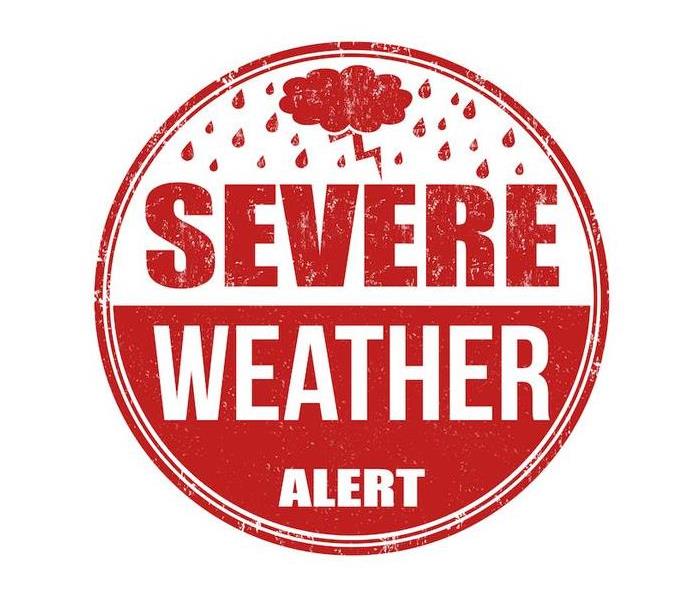 If you suspect any damage to your home from a recent storm, call SERVPRO of Jackson/SE Ingham County.
If you suspect any damage to your home from a recent storm, call SERVPRO of Jackson/SE Ingham County.
Our national weather system uses at least 42 different kinds of weather alerts, split between seven categories depending on the type of event. This is too much information for the average person to comprehend in daily life, much less if they’re sheltering from a dangerous storm.
By knowing the meaning of warnings and advisories that could be issued, you’ll be able to make better decisions during extreme weather. In addition, you can take steps to keep your home protected from storms.
A good base of knowledge about severe weather is good to have, but more importantly, we should be aware of the risks that affect our area most frequently.
How Alerts Are IssuedMost people aren’t aware of how alerts are issued. It begins with the weather forecast, a prediction about future weather patterns. However, multiple factors affect these forecasts, and a lot of data is gathered to measure the severity and characteristics of a storm.
The National Weather Service is our country’s primary organization for all forecasting and issuing potential warnings. Across our nation, there are six offices and hundreds of sub-offices that cover almost the entire landmass. Here in Michigan, we’re covered by the Central Region headquarters, which watches most of the northern USA.
The NWS employs multiple types of personnel to observe and analyze geographical, wind patterns and many other kinds of data. The types of instruments used to collect data will vary based on the kind of weather event, but they always focus on providing accurate forecasts for all Americans.
The Most Important Alerts to UnderstandThe first thing that everyone should know about severe weather is the meaning of a “watch” and a “warning.” These words are frequently used in all kinds of storms, some being tornadoes, flooding and thunderstorms.
A watch will cover large regions, like multiple counties or even states. These alerts are indicating that storms are moving your way, and could become dangerous in the coming hours.
A warning is typically only used to cover singular cities or counties, although hurricanes can bring warnings for entire coastlines. These are signs that danger is coming very soon, and you should take steps to be prepared for disaster.
You should be aware of the weather that we see here frequently, as this will allow you to prepare for the most common disasters. In Michigan, East Lansing specifically, we see more than 60 inches of snowfall and only have about 170 sunny days per year, so we see storms almost every other day.
Protecting Your Home During a StormBesides knowing your emergency alerts, you can make efforts to prepare your home and mitigate potential damage to your property from weather events.
Clearing your gutters and securing your outdoor furniture is a great place to start. Outdoor furniture is often lifted up by powerful winds and then thrown into the home’s walls, roof or windows.
When the storm is gone, you should take plenty of photos or videos of the damage that your home has suffered. Afterward, give us at SERVPRO of East Lansing/Haslett a call. We’re always ready to jump into action and help you get back on your feet.
Learn the weather most common in your area, and pay attention to weather alerts so you can be prepared for the dangers ahead.
Experienced storm damage to your home or property? Contact us today for a quick response!
Have You Prepared a Storm Safety Procedure? | SERVPRO® of Jackson/SE Ingham County
6/6/2022 (Permalink)
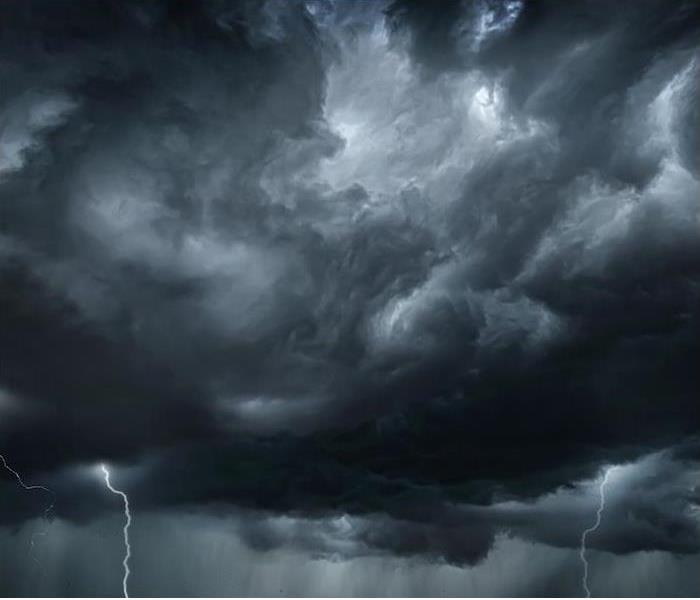 If you discover storm damage to your home or business, reach out to SERVPRO of Jackson/SE Ingham County right away.
If you discover storm damage to your home or business, reach out to SERVPRO of Jackson/SE Ingham County right away.
Winter storms can be rough here in Michigan, but we shouldn’t forget about the severe weather that comes with spring. These storms can cause events like lightning, rain, winds, flooding and hail, all capable of damaging your home or business. It’s crazy to think about, but there are around 100,000 thunderstorms throughout the United States every year, which is almost 2,000 per week!
In Michigan, we are closely acquainted with extreme weather, but we’re not afraid of it. Disasters like blizzards, nor’easters and even extreme flooding that cost our local community over $2 billion in repairs.
It would be nice to hit a button and get rid of any dangerous weather, but unfortunately, we can’t do that. However, you can— and should—prepare for storms by building an emergency kit, planning a good strategy for communication and taking action to be ready for when storms strike nearby.
Your Severe Weather Communication StrategyDuring emergencies, it’s crucial to have proper lines of communication with your loved ones and with your local government. Paying attention to the alerts in your area and knowing the difference between watches and warnings will ensure that you know what the next move is.
Second, it’s a smart idea to have multiple ways to receive weather alerts from officials. Television works great, but storms often knock out the signal, and cellphones always seem to run out of battery right when you need it most. An NOAA weather radio with spare batteries close by is your best bet to stay informed.
Lastly, developing a thorough communication strategy for your family members is key. This lets you stay in touch with loved ones and eases your mind by knowing that they’re safe. For the people in the house, having a specified location to shelter is also important—pick a spot that’s away from any windows like a large closet.
Your Severe Weather Emergency KitThe term emergency kit seems complex, but it can be simplified by thinking about what you and your family members will need for 72 hours or more of sheltering in place. These kits typically include nonperishable food, a lot of water, working flashlights, extra batteries and first-aid supplies.
These kits should be kept in your designated safe room so that you can access them when you take shelter. By taking this extra step, you will be more prepared for the potential disasters that come from storms.
Your Severe Weather Aftermath ChecklistWhen you have received the all-clear and it’s safe to leave your safe room, there are a few extra steps in being prepared for severe weather. Addressing your home’s condition comes first, and you need to do a check for property damage.
If you uncover damage during your property check, you can always call us day or night. At SERVPRO of Jackson/SE Ingham County, we pride ourselves on being restoration professionals with 24/7 availability to come to your rescue. So when damage happens, reach out to us and have your home or business back to preloss condition as soon as possible.
Finally, after assessing your home for damage, it’s always good to go through your safety plan and look for ways to improve. Explore where things went wrong, or what things went right, and build on that for the next time you face extreme weather. Taking these steps and calling your local experts can help you stay safe and keep your home or business in working order
If you discover storm damage to your home or business, you can count on SERVPRO to handle the restoration. We’re here 24/7 to spring into action—get in touch with us today.
Storm Watches, Storm Warnings & Other Safety Tips to Note | SERVPRO® of Jackson/SE Ingham County
5/25/2022 (Permalink)
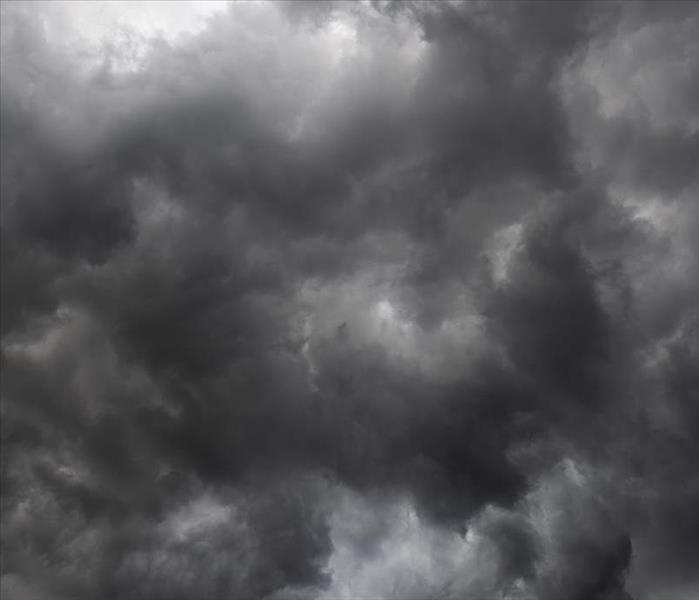 Contact SERVPRO of Jackson/SE Ingham County today!
Contact SERVPRO of Jackson/SE Ingham County today!
All too often, severe weather is underestimated. Because thunderstorms often move through areas without causing significant damage, there is a tendency for people to assume that every storm will be minor—unfortunately, this could not be further from the truth.
Storms are powerful and complicated things, and it is important to remember that staying safe is so important.
Safety from severe weather is not something to be taken lightly, and it is much easier to stay safe if you know the proper terminology and what it means for you. Below, we will be looking at the difference between severe weather watches and warnings, and including a few key safety tips so you and your household can stay protected.
The Difference Between Storm Watches and Warnings
What Is a Watch? When a watch is issued, be it for a severe thunderstorm, flood or tornado, that means that conditions for these weather events are favorable—as in, there is a strong chance that they could occur. However, when a watch is issued, the weather event is not actively occurring, and is only possible.
What Is a Warning? When a warning is issued, that means that the weather conditions in question are actively occurring or have become imminent. This means a severe storm has developed, a tornado has been spotted or flooding is happening somewhere within the area, and those in the warning district should quickly get themselves to safety.
Other Safety Tips for Severe Weather
In addition to knowing the difference between a watch and a warning, it is also wise to take note of other safety tips for protecting yourself and your loved ones in the event of severe weather.
- Know where to shelter, whether at home or out and about, if severe weather becomes imminent.
- Keep a weather radio on hand so you can get updates even if cell phone networks fail.
- Know where your local shelters are in case you must evacuate your home.
- Keep a well-stocked emergency kit in your at-home sheltering area so there is no need to leave until it is safe to do so.
If you have storm damage to your home, you can count on us to help. We are here 24/7 to provide storm restoration services—contact us today to learn more.
What Fire Hazards Should I Be Aware of Around the Home? | SERVPRO® of Jackson/SE Ingham County
5/25/2022 (Permalink)
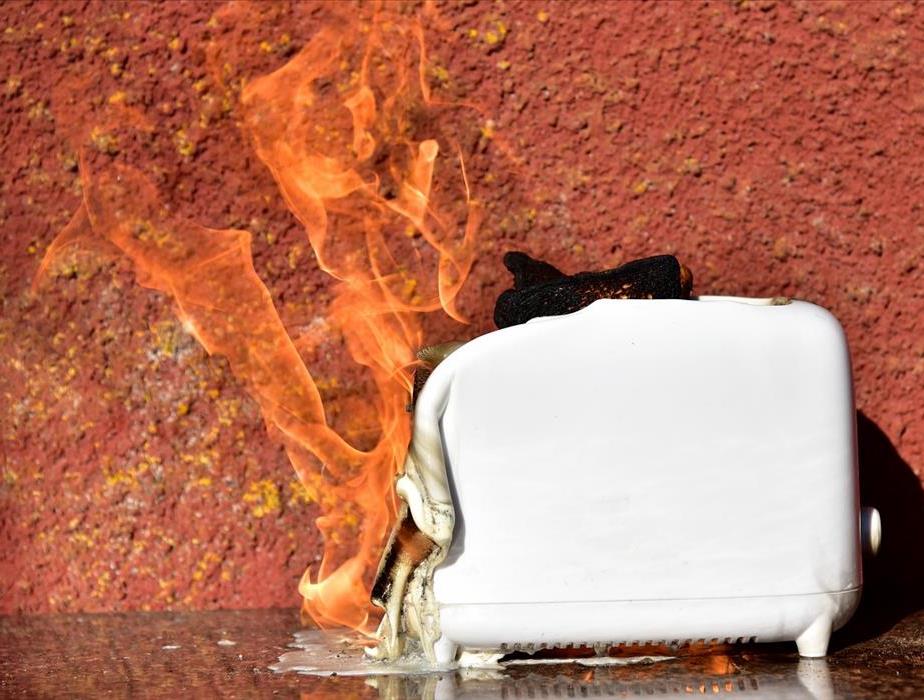 if you have a home fire, contact SERVPRO of Jackson/SE Ingham County today!
if you have a home fire, contact SERVPRO of Jackson/SE Ingham County today!
Experiencing a house fire is a terrible thing. Not only can they cause extreme amounts of damage, but they can also cause injuries and fatalities to anyone caught in their path. In 2020, house fire damages amounted to $12 billion and occurred in nearly 500,00 homes.
While there is no way to be certain you are preventing a fire in your home, you can certainly take concrete steps to reduce the likelihood that one will occur. Simply understanding what fire hazards there are to be aware of within the home can go a long way in helping you take proper steps towards prevention.
Common Fire Hazards to Be Aware of at Home
Overloaded Electrical Outlets
Electricity has become integral to daily life, but in many homes, the supply of outlets is not able to keep up with demand. This can lead to the outlets that are accessible becoming overloaded with extension cords, causing too much voltage to be pumped through them—and this is a serious fire hazard. If your home does not have enough outlets, it is worth investing in an electrician to add in more or being more selective with the things you leave plugged in.
Unsafe Kitchen Habits
Kitchen fires are consistently the most common type of house fire, which is not surprising given that there is quite a bit of opportunity involved. Between stovetops, ovens, toasters and other appliances, there are many things within the kitchen that can ignite a fire, and these can be exacerbated by unsafe habits. Make sure that you and anyone else who uses the kitchen in your home does so with safety as top of mind.
Irregular Dryer Lint Cleaning
Your dryer’s lint tray serves an important function when it comes to doing laundry, but it can also become a fire hazard if it is not emptied often. When the dryer heats up, the highly flammable lint within the tray can catch fire, so it is best to clean out your lint tray with every cycle of laundry in order to be safe.
If you have a fire in your home, we are the team to call. We are here 24/7 to help with restoration—contact us today to learn more or get started.
Weather Hazards in Michigan as Spring Approaches | SERVPRO® of Jackson/SE Ingham County
5/24/2022 (Permalink)
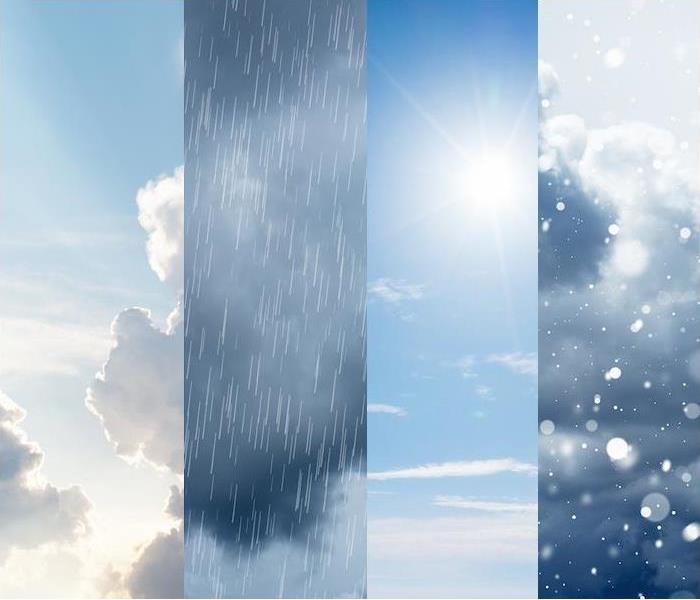 If you have storm damage this spring, call SERVPRO of Jackson/SE Ingham County!
If you have storm damage this spring, call SERVPRO of Jackson/SE Ingham County!
In terms of total land area, the United States is second only to Russia and Canada (though China is larger if all outlying US territories are excluded). It’s a very large and diverse country.
Because of its sheer vastness, seasonal weather does not follow a one-size-fits-all pattern across the whole country. Throughout the year, distinct regions of the country experience a variety of diverse weather patterns, resulting in a range of weather threats.
With the arrival of spring, warm and cold air masses collide throughout the nation, resulting in extreme weather occurrences. Let’s take a look at what we may expect in various parts of the nation, as well as what we should keep in mind here in Michigan.
Severe rain drenches the Pacific Northwest in the spring, which may result in flooding and water damage to homes. At higher elevations, snow will continue to fall, and the ensuing melting and runoff will create its own concerns.
The Upper Midwest, including Michigan, and all through the Northeast have the longest winters (as you’re surely aware), with frigid weather lasting throughout the season. Michigan has also seen an increase in rain and snowfall in recent years.
The frequency and intensity of extreme precipitation are projected to continue to rise, potentially increasing the frequency and intensity of floods throughout spring. Extreme cold and the threat of snowstorms and blizzards may be expected as far northeast as Maine all the way over to the Dakotas until late spring or early summer, when temperatures begin to rise again.
The southern West Coast, on the other hand, will experience the opposite, with severe heat waves possibly risking lives and property. Additionally, tsunamis caused by tectonic activity can be expected throughout the South Pacific, including Hawaii.
Windstorms, derechos and the risk of wildfires will be major threats across the heartland, from Iowa to Texas. When the winds are high and the weather is dry, wildfires may spread quickly. Accordingly, Tornado Alley, which has a high tornado frequency, is included in this zone.
Tornadoes and severe thunderstorms in landlocked areas, as well as catastrophic rip currents and hurricanes on the coast late into spring, are all possible in the Southeast region.
Extreme weather poses a significant risk to everybody in the United States, regardless of location. Yours may be different from that of a relative a few states away, but being prepared is always a smart idea.
If extreme weather leaves you with damage from water, fire or other elements, help is a click away. Contact SERVPRO for fast, expert recovery.
Winter Storm Damage
2/17/2020 (Permalink)
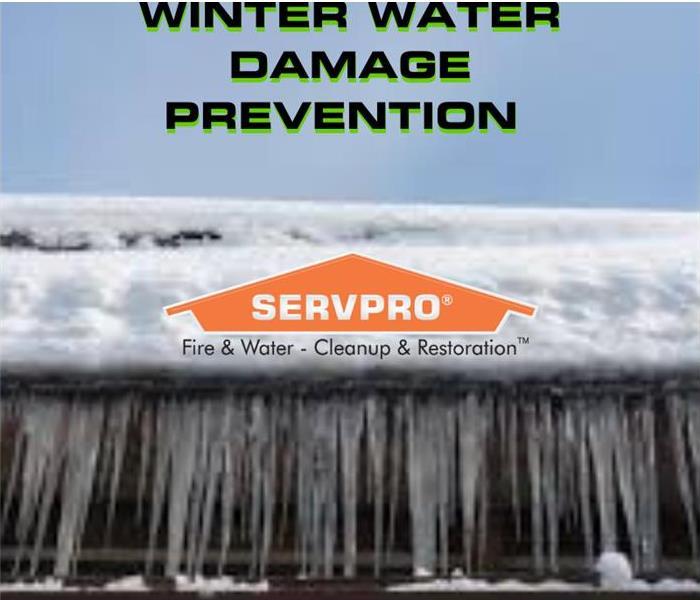 Helpful tips for preventing winter storm damage.
Helpful tips for preventing winter storm damage.
When you think of storms, most people traditionally think of thunderstorms. These storms are usually accompanied by wind, rain, thunder, lightning and flooding. Here in Michigan we experience this type of weather through spring, summer and fall. However, as Michiganders, we are also familiar with another type of storm, the winter storm. The Polar Vortex, The El Nino and La Nina, are weather patterns that can drastically affect our weather conditions throughout the winter months and wreak havoc on our homes.
Much like our spring and summer storms, there are things we can do to prepare for the winter months and the impending frigid temps. By winterizing your home you can help improve your home’s security during this season.
The following are some tips to help prevent damage to your home during a winter storm or prolonged, harsh, cold weather:
- Much like summer storms, keeping your gutters cleaned is imperative during the winter months as well. Uncleaned gutters can lead to ice dams, which can lead to shingle damage, roof damage and potentially interior damage to your home.
- Having any low hanging limbs trimmed around your house and power lines can be a huge benefit and a great preventative tactic. These limbs are usually the first to go when the ice begins to build up, and trimming can prevent a power outage or damage to your home.
- If you go south for the winter, or plan on traveling during potentially frigid months, keeping your heat at 55 degrees is very important. Winterizing your home during times of prolonged travel is the best way to go. The money spent to have your local plumber winterize your home vs. the cost of a potential pipe break makes this a “no brainer!”
- Insulating exterior walls where there are water lines is highly recommended. Of course, any improvements a homeowner can make to their home’s insulation is always a great idea for a multitude of reasons, specifically regarding this subject matter.
- When the temperatures begin to plummet and our overnight forecasts have us below zero for consecutive nights, let your water run on a slow trickle in your sinks. (and please, make sure the drain is clear!!)
- Leave the door of your kitchen cabinets and bathroom vanities open during cold snaps and winter storms. Keeping the doors closed does not allow the heat to bring that space to room temperature. Keeping the doors open can mean the difference of several degrees, which can be the difference between pipe break and no break.
Need help? Call SERVPRO of E. Jackson/SE Ingham Counties at 517-782-8533.
 If you suspect any damage to your home from a recent storm, call SERVPRO of Jackson/SE Ingham County.
If you suspect any damage to your home from a recent storm, call SERVPRO of Jackson/SE Ingham County.


 24/7 Emergency Service
24/7 Emergency Service




